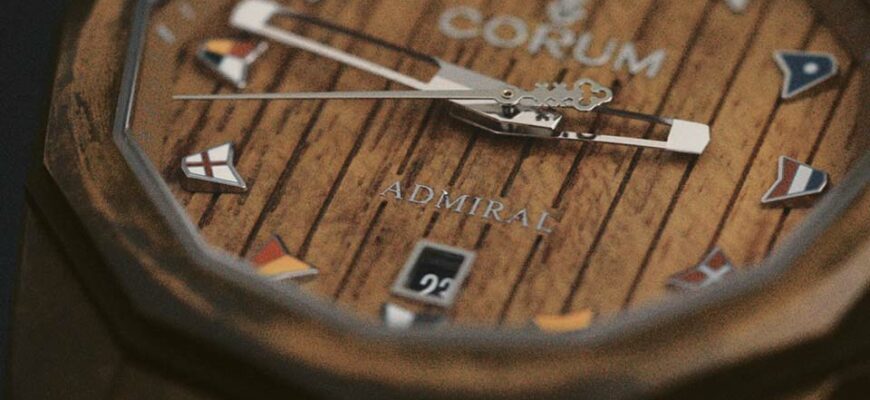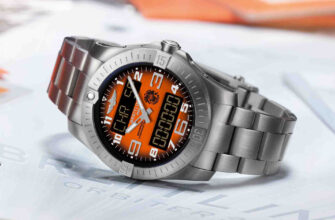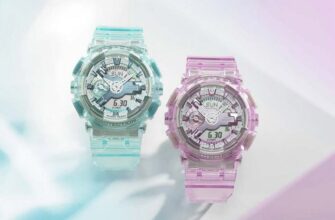Mechanical timekeepers have served man for more than half a millennium. The clock tower of Salisbury Cathedral was made in 1386 and has been there ever since. There were, of course, mechanical watches before that, various written sources mention them, but little has survived from the watches of that period to our days.
As for small watches that could be carried with you, they, of course, could not work either on a water or on a weight drive, therefore they owe their appearance to the invention of the mainspring. And the first mention of a clock with a spring drive refers to the clock Filippo Brunelleschi (1377-1446), created in the first decade of the 15th century.
Precious Beginning
With the invention of the mainspring, it has become a matter of technology to reduce the size of watches so that they can be carried with you. The first "portable" watches appeared before pockets, so both men and women wore them, as a rule, around their necks. The watch cases of that time were usually made of gilded brass or, in some cases, of iron, because the shop rules forbade watchmakers from using gold and other precious metals for these purposes.
A significant number of early portable watches had a striking mechanism, so holes were usually made in the cases for better audibility. Watches at that time were valued very highly, the owners put them on display, and therefore it is not surprising that the art of watch decoration flourished. The cases were decorated not only with exquisite patterns of holes, but also with engraving and bas-reliefs. We can say that the artistic level of design of watches (both small and large) during the late Renaissance reached such heights that the watch industry as a whole has not risen since then. Among the fashion trends of that time were figured watches - in the form of crucifixes, flowers and animals - and the so-called memento mori - watches in the form of a skull.
Pockets, which at first were bags tied to clothes, and only then turned into an element of clothing itself, had a serious impact on watch cases. In early double case watches, the outer case, or case, was only needed to protect the ornate inner case. Therefore, cases were often made of leather, including shagreen and stingray skin. Shagreen, leather with a rough texture, looks more elegant than usually dressed leather.
It can be considered that an interesting trend in the evolution of the double case began with it: the irrepressible desire of the owners to make the high cost of their watches catch the eye of everyone at once, eventually reached the point of absurdity, and it was necessary to come up with a third case that would protect against damage that had become too expensive and highly artistic second building.
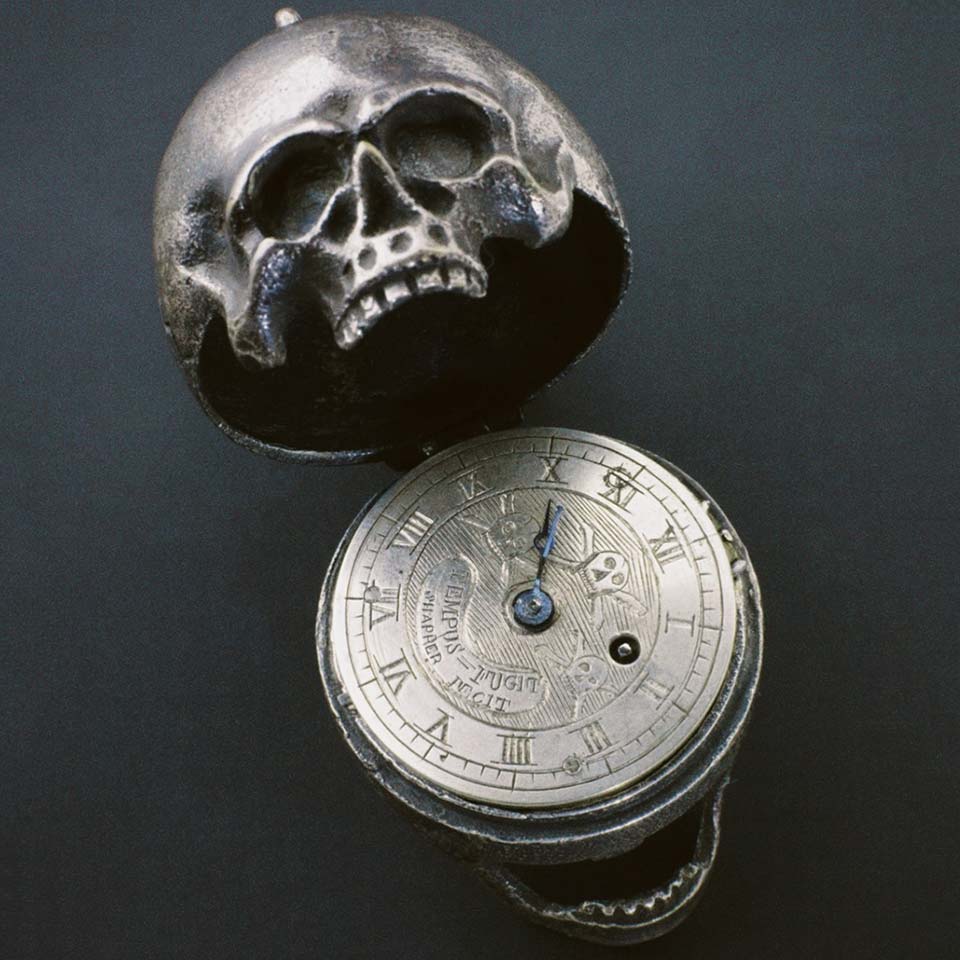
We can say that the artistic level of design of watches (both small and large) during the late Renaissance reached such heights that the watch industry as a whole has not risen since then. Among the fashion trends of that time were figured watches - in the form of crucifixes, flowers and animals - and the so-called memento mori - watches in the form of a skull.
Clock as a precision instrument
Over time, not only the case changed, but also the internal content of the watch. When the hair spring appeared and the quality of the running springs improved, the clock became much more accurate: now the daily deviations from the exact course were no longer more than an hour, but only a few minutes, or even less. In 1761, John Harrison's H4 marine chronometer showed a fantastic result on his very first tests: during the entire journey from England to Jamaica, the deviation was only five seconds.
With the advent of such fundamental mechanisms as chronometer and escapement escapements, and a number of inventions such as the breguetted spiral and thermally compensated balance, which increased the stability of the oscillator frequency, watches in the eyes of contemporaries began to be increasingly perceived as a precision instrument. Of course, watches with richly decorated cases were made for wealthy clients (precious stones, engraving and enamel were still in use), but watchmakers such as Abraham-Louis Breguet, John Arnold and Ferdinand Berthoud are no longer artisans, but real scientists , - set a new aesthetic of practical elegance, which has survived to this day.
In the United States of America, in the first half of the 19th century, the clock was also gradually being transformed from a decorative thing into an instrument, and the main attention was paid to its accuracy and legibility. So-called "railway watches" appeared - pocket models that met the standards set by railway companies and were designed to help conductors and drivers avoid accidents, which began to occur more often with the development of the railway network. These watches had an emphatically utilitarian appearance without any embellishments. In a word, the chronometer of the 19th century moved into the pocket, became not so much a status symbol as an assistant in business and acquired an ascetic appearance, quite in line with the male fashion of that time, which also rejected any excesses.
By the early 20th century, when wristwatches appeared on the scene, mechanical watches were everywhere. Watch style was still dominated by practicality, and after the First World War, when it became clear that pocket "bulbs" were inconvenient on the battlefield, wristwatches gained popularity among men as well. Then, when the vest finally disappeared from the everyday men's suit, pocket watches became a thing of the past and outward simplicity and unpretentiousness became the norm for wristwatches.
The advertising of those years is quite indicative: it shows that they now expected watches, first of all, to be accurate, reliable and durable. And after 1945, with the end of the second global military upheaval, watches completely turned into an “indestructible” piece of equipment, which was obliged to serve the owner in the most extreme conditions. Moreover, watches began to appear that could work even when the owner himself could not stand it. Watch companies invented shockproof and waterproof cases, ways to protect the movement from magnetic fields, new alloys and production technologies were developed - all this prepared the birth of sports watches.
On the other hand, the style of the classic “suit” watches of the post-war era was formed - their hallmark was an elegant flat case that easily fit under the cuff of a shirt. If a watch connoisseur of the middle of the 18th century looked at the window of a watch shop of the 50s-60s of the 20th century, all the brands would seem to him the same face: the cases were so similar. And this state of affairs persisted until one modest novelty appeared on the market - a quartz watch.
Creative rise
The beginnings of a renaissance in watch design were discovered back in the late 60s and 70s. The fact is that the industry has launched the production of inexpensive and accurate mechanisms, the accuracy of the course has become the norm, and again there is an incentive for design creativity. But everything changed dramatically with the advent of quartz watches: now both the flat case and practicality, which were so valued in the post-war period, were associated with quartz for the mass buyer.
Work aimed at reducing the thickness of the case eventually culminated in the creation of the Concord Delirium watch (the Delirium IV model had a case thickness of 0,98 mm, the watch was so thin that it bent when fastening the strap), and Seiko became an exemplary professional watch that did not care. Professional diver. However, there were far-sighted people in the watch industry who realized that with the ubiquity of quartz watches, mechanical watches would not go into oblivion, but, on the contrary, would gain freedom.
Oddly enough, the flight of designer fantasy also began with quartz watches. Among the pioneers here were Swatch, which launched models with an endless variety of dials, cases and straps, and Movado, which began to collaborate with artists such as Andy Warhol and James Rosenquist. The watch industry has not seen such bold decisions within the framework of aesthetic canons for many decades.
As far as watch mechanics is concerned, although the outlook looked extremely bleak, in some companies cost-saving strategies have taken precedence over innovation strategies. This is evidenced, for example, to this day by the super-popular Royal Oak and Nautilus models, which Audemars Piguet and Patek Philippe released just in the 70s. By the beginning of the new millennium, mechanical watchmaking, despite the forecasts of skeptics, came out of a coma.
Today's craftsmen no longer consider movement construction and case design to be two entirely separate areas; today they see them as a single continuum, in which the case reflects the mechanical idea inherent in the watch. As for practical qualities, thanks to the use of modern heavy-duty materials, it is possible to create mechanical watches that are as striking in their vitality as some other models amaze with their original appearance.
Some watches sink to the bottom of the ocean, do not succumb to scratches and endure blows no worse than tank armor, others express the philosophical views of their creators on the human attitude to individual and universal time - in general, we can say that the case, the most noticeable part of any watch, has never been before us in such a variety of forms from the end of the 18th century. Moreover, this wealth is largely due to the latest technologies of micromechanics. And although at one time it seemed that technological progress threw traditional watchmaking into the dustbin of history, now we see that in fact he gave him freedom.
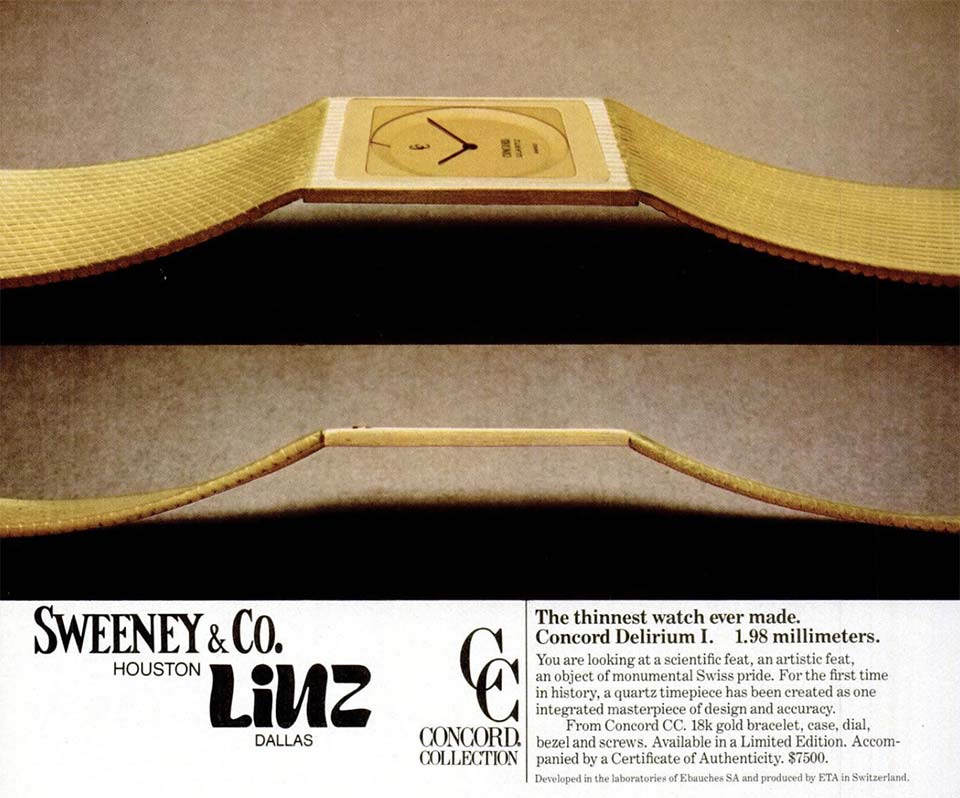
The work aimed at reducing the thickness of the case eventually culminated in the creation of the Concord Delirium watch (the Delirium IV model had a case thickness of 0,98 mm, the watch was so thin that it bent when the strap was fastened).
vermin
Shocks, moisture, magnetic field - for watches there is nothing worse than these three deadly enemies, crippling, killing. For almost 500 years that watchmaking has existed, no weapons have been found against them, except that the advice to the owner is to be more careful. A heavy pocket watch fell on something hard, even if it was from a very small height - the trunnions of the balance axis were bent. If splashed, the consequences can be dire, so from the inception of wristwatches until very recently, wearers always removed them before washing their hands. And even today, watches are vulnerable to a simple magnetic clasp, say, on a mobile phone case.
Once upon a time, the manufacturer only had to lubricate the threads of the back cover with wax, hoping that this would somehow protect the watch from the harmful effects of external forces. Fortunately, progress did not stand still: first, the watch got a second, outer case, then the mechanism was covered from dust with a special gasket; the clumsy crown gave way to the crown and was superseded everywhere by the self-winding, all designed to protect the movement, yet it remained weak and vulnerable. This was the case until the beginning of the 20th century.
impermeability
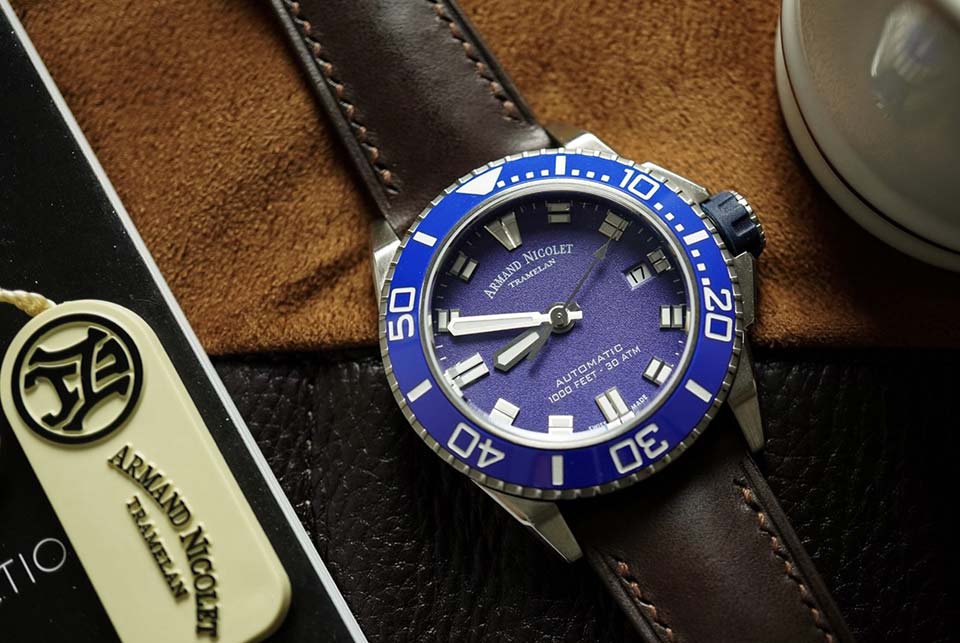
Among the first waterproof watches was Cartier's Tank "Étanche". The developers set themselves an extremely difficult task, namely, to make a sealed rectangular case, and it is precisely the corner that is very vulnerable: water that converges at an angle will break through faster than rounded ones. Rolex managed to direct the technical thought along the right path, which released the Oyster model: in it, the crown and case back were made screwed, and the case became round. According to this model, patented in 1926, all waterproof watches were created and are still being created.
Maybe the word "waterproof" is not entirely accurate: there are no XNUMX% sealed models, and no matter what depth of immersion the watch is designed for, the case can still let water through under some circumstances. On the other hand, modern models, even if they are not intended for scuba divers, are still protected from moisture - and one could only dream of such reliable protection a hundred years ago.
No matter how trite it sounds, but only thanks to the invention of rubber, and then synthetic gaskets, as well as the appearance of silicone-based water-repellent gels in order to lubricate these gaskets, millions of mechanisms were able to wrest from the deadly embrace of rust. There is a feeling that the race for water resistance is a kind of game. So it is, and in this game, the manufacturers have succeeded. In fact, it is enough to change the gaskets and sealants regularly, and the probability of the watch dying from exposure to moisture will be negligible.
Only those few who use them for their intended purpose can make special demands on diving watches: it is important for them that the time device withstand the most severe conditions, for example, when diving to great depths. But ordinary divers today have plenty to choose from. By the way, the record set in 1960 by the Rolex brand has not yet been broken: the Deep Sea Special watch was attached to the wall of the Trieste bathyscaphe and lowered into the deepest place in the World Ocean - the Challenger Trench in the Mariana Trench (10 m).
The designers, of course, had to sacrifice the aesthetic side: in order for the glass to withstand the pressure of water, it had to be made as thick as possible, and the watch did not differ in small sizes anyway. And yet, this model is still considered exemplary to this day, because it is a clear example of waterproof technologies in action, and the record set by it, in principle, cannot be beaten unless oceanographers discover deeper places on the planet. True, there is no need for such reliable protection.
By comparison, a recreational scuba diver typically dives to a depth of 30 to 40 meters, the standard requirement for a dive watch (ISO 6425) is 100 meters, and most diving watches today are rated to at least XNUMX meters.
An Armand Nicolet JS9 Date watch or a Ball Engineer Hydrocarbon Submarine Warfare watch can be submerged to a depth of 300 m, which, as we understand it, is already ten times more than the average diver needs. The production of deep-water watches has become a separate industry, living by its own laws. Today, here and there, there are models designed for nothing less than 1 meters, which means that in order to be taken seriously in this market, you need to, as they say, think deeper. While Seiko and Citizen limit their professional dive watches to 200 m (Seiko puts a high-quality automatic caliber on its models, and Citizen uses a solar-powered Eco-Drive quartz), the Aquatimer has become the leader in the category up to 1 m. 000 manufactured by IWC.
Avenger Seawolf from Breitling reached the mark of 3 m. At a depth of 000 m, any object will be immediately crushed by pressure, only a special underwater probe can dive so deep - but this is exactly the depth that the Rolex Sea-Dweller Deep Sea is designed for. But the absolute record holder is the Bell & Ross brand: the calculated depth assigned to the Hydromax quartz watch is astounding - 3 m. This model, whose case is filled with incompressible mineral oil, could well compete with the Rolex Deep Sea Special and, like the latter, dive on the bottom together with the bathyscaphe.
Magnetic resistance

The thermo-compensated alloys that hairsprings are made of today are much less susceptible to magnetization than the former material, blued steel. And yet, these alloys cannot completely insure the watch from the harmful effects: the magnets have become more powerful, and there are more and more sources of the electromagnetic field around us - from the clasp on the mobile phone case to the speakers of the stereo system. In a word, everyone can magnetize a watch, and not just a technician from some testing laboratory. In an effort to reduce the impact of electromagnetic fields, the designers of mechanisms select materials that are less susceptible to magnetism.
The undoubted achievement in this area is the silicon hairspring: in this case, only steel parts, say, an anchor fork, can suffer from the influence of a magnetic field, but not the spring. If the spring, the escapement wheel, and the escapement fork are silicon, then the mechanism is virtually immune to magnetic influence. Parachrome springs, an alloy of niobium and zirconium invented by Rolex, have the same properties; this explains the anti-magnetic properties of his famous Milgauss model.
It appeared in 1954, was produced until 1988, and in 2007, having experienced a second birth, again gained fame and honor. For those who develop the corpus, the approach is somewhat different. In order for a watch to claim the proud title of anti-magnetic, the field protection must be very reliable, and there is an international standard - ISO 764: the watch must withstand a field strength of 4 amperes per meter (A / m). The task of the designer is to place the mechanism in the so-called "Faraday cage".
In essence, this device (named after the inventor Michael Faraday, who first demonstrated it in action in 1836) is nothing more than a hollow conductor of electric current: the magnetic field envelops the “cage” from the outside, without penetrating inside. Traditionally, anti-magnetic watches have an inner case made of soft iron. In addition to such a very reliable protection, sometimes parts of the mechanism are also made anti-magnetic.
Over the past half century, thousands of new sources of magnetic radiation have appeared in the outside world, but there are not so many watches in the antimagnetic case on the market. But a true connoisseur of watchmaking art cannot remain indifferent to how watch case developers are fighting against the insidious enemy of the watch mechanism, generated by man himself.
Impact resistance
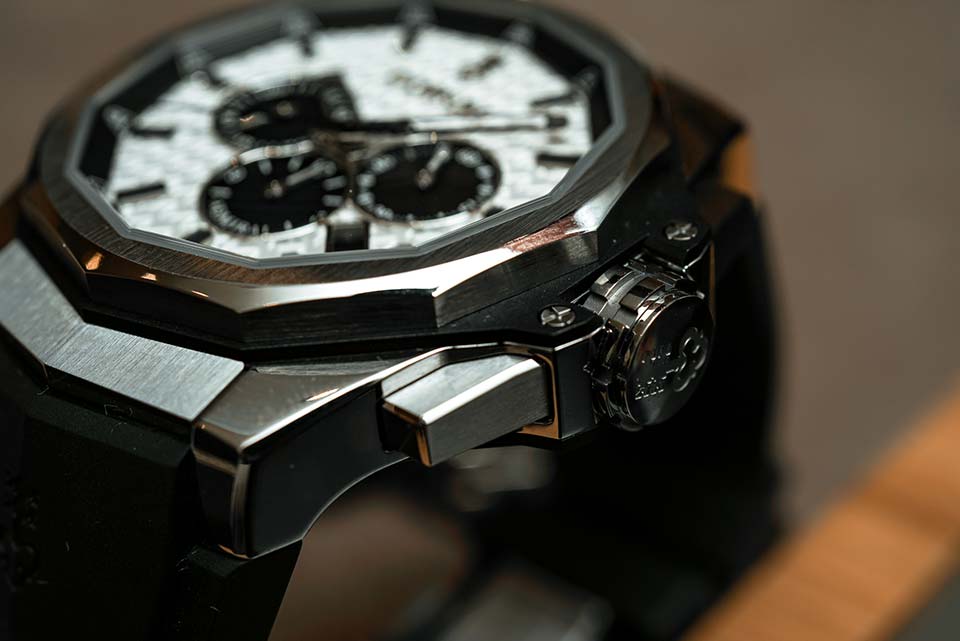
None of us likes scratches and dents on the watch case, even if these watches of ours were “sporty”. In an effort to save us from unnecessary stress, watchmakers are looking for a golden mean: the material for the case should be selected hard, but not too hard, otherwise it will be impossible to work with it on the machine. Masters cope with this task. Moreover, cases that are super resistant to mechanical damage - despite their stubbornness, and maybe because of it - often turn out to be the most beautiful. (Intentionally we will not talk about G-Shock here, especially since we have already worshiped this watch quite recently).
A milestone in the history of watchmaking was the introduction of stainless steel cases, a material without which it is impossible to imagine modern sports watches. Traditionally, 316L surgical steel, which is quite vulnerable to physical attack, is used; its hardness depends on the tempering, but the maximum value is about 225 Vickers, and watchmakers have been fighting for decades for every unit beyond these 225. The latest sports models, for example, use much harder steel.
But the Sinn and Bremont brands have advanced the farthest. So, the three-piece case of the Bremont Trip-Tick model is made of steel with a hardness of 2 Vickers; thanks to the original tempering technology called “Tegiment”, Sinn masters managed to bring this figure to 000. Time passes, materials and technologies are improved, and, contrary to popular belief, watchmakers do not reject them - on the contrary, because they allow not only to preserve the historical appearance models, but also to bring a modern twist. Watchmakers are willing to experiment with ceramics, tantalum and tungsten carbide. All kinds of coatings are also being improved: diamond-like carbon, for example, has a hardness of 1 to 200 Vickers units.
The topic of combating “pests” of watches can be developed endlessly, but time is valued no cheaper than money, so let’s wrap up the story on this, ending with friendly advice: no matter what protection your watch has, you shouldn’t beat, wet and torture them with electric shock for your own pleasure - believe to the word of professionals - if something happens, they will survive!
